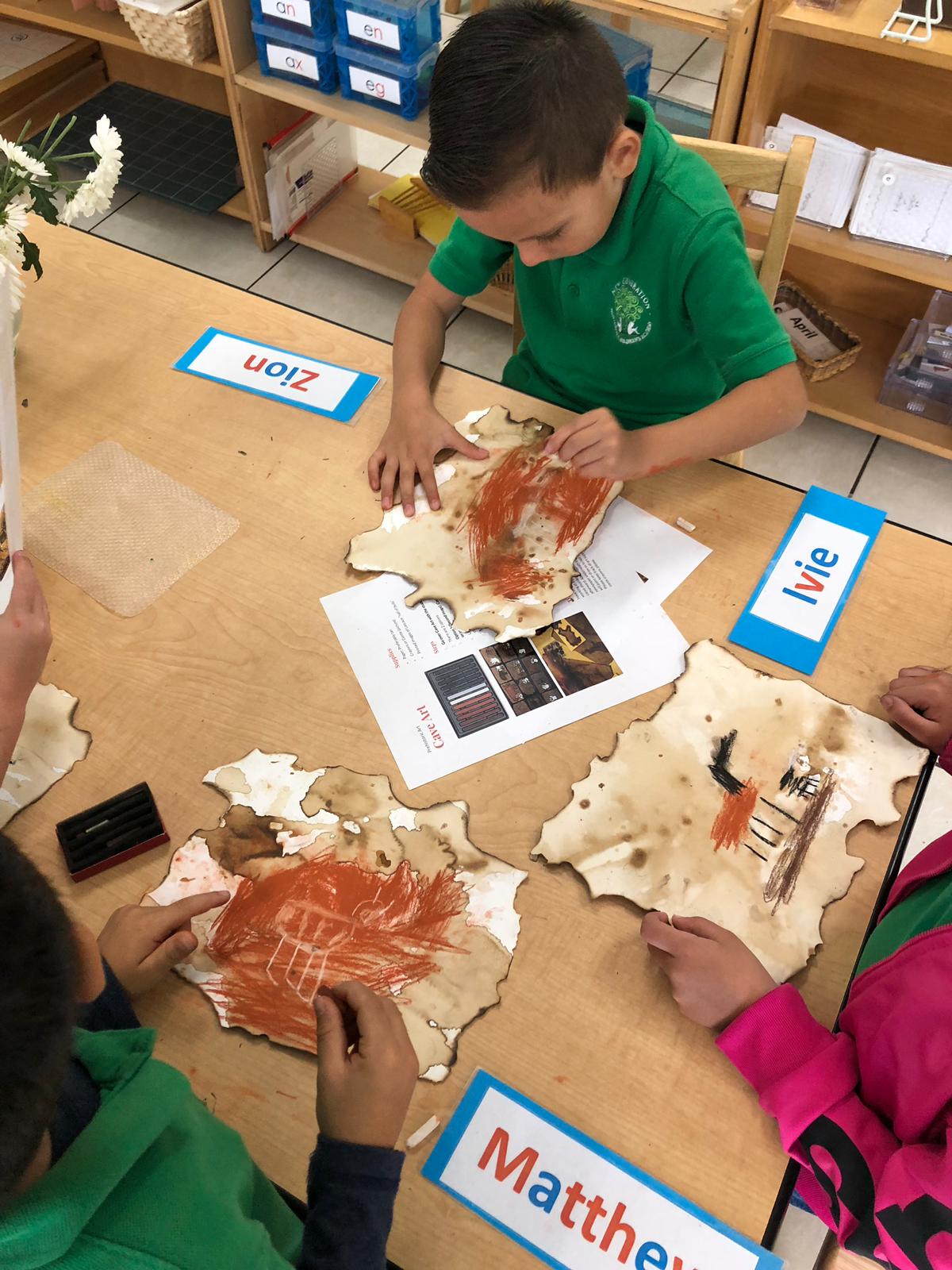Visual Arts
“If we try to think back to the dim and distant past… what is it that helps us reconstruct those times, and to picture the lives of those who lived in them? It is their art… It is thanks to the hand, the companion of the mind, that civilization has arisen.
— Maria Montessori, The Absorbent Mind”
From the beginning of time, art has been an expression of freedom and creativity. Growing up, children will learn to express themselves in many ways. Visual Arts, in particular, creates a special connection between what they think and the world they live.
At New Generation Montessori we developed a unique curriculum to have a better-prepared environment and to give an opportunity for children to learn about artists from Prehistoric times to Contemporary times, while simultaneously being able to experience the use of multiple mixed media techniques.
While working on their fine motor skills, they can express their feelings, and emotions, and much more through art.

Triggering their creativity
Our Walk Through the Ages
Presenting to the children: Prehistoric, Ancient Near Eastern, Egyptian, Greek, Roman, Islamic, Gothic, Oceanic, Asian, African, Scandinavian, Indigenous, and Global Contemporary Art. We look into the art and lives of Vermeer, DaVinci, Monet, Seurat, Munch, Dali, O’Keeffe, Picasso, Kandinsky, Pollock and several more highly esteemed artists from the art world.
Childern Will Learn
Not only to appreciate the artworks but also to create their own versions of the masterpieces from the presented artists. Their work goes much further than crayons and paper. They can create their own versions utilizing different techniques. Part of what makes up these techniques comes from using different mediums, such as: Chalk, acrylic, watercolor, oil pastels, ink, canvas, cardboard, film, and so on.

Our goal
Is to help them learn that they can use multiple techniques to achieve their own vision. Is to create a prepared environment where they can freely create their own work. Is to trigger their creativity, their observation, and their analyzation skills.

